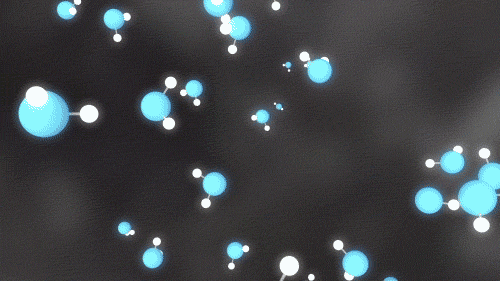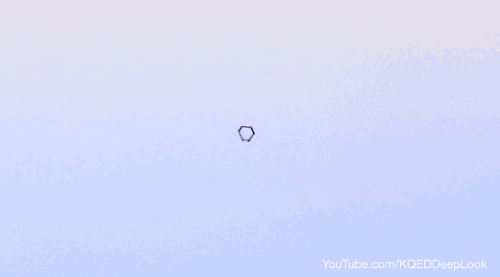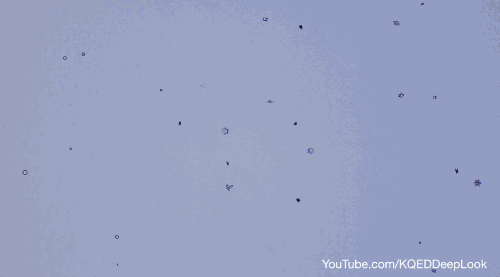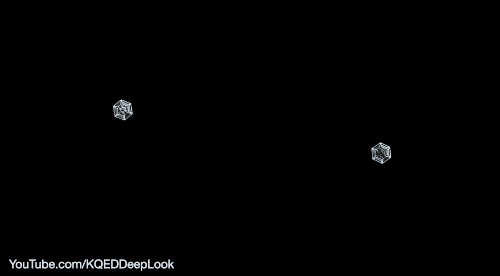Identical Snowflakes? Scientist Ruins Winter For Everyone | Deep Look
California’s historic drought is finally over, thanks largely to a relentless parade of powerful storms that have brought the Sierra Nevada snowpack to the highest level in six years, not to mention guaranteed skiing into June. All that snow spurs an age-old question — is every snowflake really unique?
“It’s one of these questions that’s been around forever,” said Ken Libbrecht, a professor of physics at the California Institute of Technology in Pasadena. “I think we all learn it in elementary school, the old saying that no two snowflakes are alike.”
Libbrecht spends most of his time thinking about things like black holes and gravitational waves. But for years the North Dakota native has also delved into the mystery of how snowflakes grow into such a dizzying variety of shapes, all based on the same ingredient — water.
So is it possible to find two snowflakes that are exactly the same?
They can be made in a lab. But when it comes to nature, it’s possible, but you’re not likely to find two that match exactly, Libbrecht said.
“It goes back to how they’re made in the clouds,” he said.
Snow crystals form when humid air is cooled to the point that molecules of water vapor start sticking to each other.

Water molecules are each made out of one oxygen and two hydrogen atoms. Good ‘ol H2O!
The molecules fit together in the shape of a hexagonal ring with bonds forming between hydrogen of one molecule and the oxygen of another molecule.
As more molecules join the growing crystal, they fit into that repeating shape, which is why you tend to find snowflakes with six arms.
In a refrigerated chamber at his lab, Libbrecht built a device that mimics the conditions found in the clouds.
In the bottom of the chamber, Libbrecht keeps a container of hot water. As the water evaporates, it fills the chamber with water vapor. When the air is as humid as it can get, Libbrecht triggers a puff of condensed air that drops the temperature in the chamber suddenly.
That blast of cold air causes the water molecules to stick to each other, forming tiny ice crystals about the same diameter as a human hair.
In the clouds, crystals usually start forming around a tiny microscopic dust particle. But if the water vapor is cooled quickly enough the crystals can form spontaneously from water molecules alone.
“At this point they they’re just little tiny hexagons,” says Libbrecht. “We call them seed crystals.”
After a few moments of floating around the chamber, the tiny crystals grow big and heavy enough to fall. Libbrecht catches them on a small refrigerated slide.
He adjusts the humidity and temperature and, using a microscope, watches the crystals grow.

“After a little practice you can make things that are faceted or branched on demand,” he said. “I can make nice plates or turn the knob and make some branches or make side branches. You can kind of design snow crystals.”

Libbrecht found that when he grew multiple crystals on the same plate the crystals experienced the same conditions at the same time. The result: twins!
“I like to call them identical twin snowflakes because, like identical twin people, they’re not absolutely exactly the same but they’re very, very similar,” said Libbrecht.

In nature, snowflakes don’t travel together. Instead, each takes its own path through the clouds, experiencing different conditions at different times. Since each crystal takes a different path, they each turn out slightly differently.
And studying how ice crystals grow isn’t just a way to make designer snowflakes. It’s a way to understand and control the way crystals grow.
And that’s important because we use crystals in electric devices ranging from coffee makers to jumbo jets.
“Even with very important things like the semiconductors in computers, we don’t really understand the growth of crystals very well,” said Libbrecht.
“There are recipes to make those silicon wafers that form the backbone of those microchips, but they mostly came about just by trial and error.”
Ken Libbrecht’s online guide to snowflakes, snow crystals and other ice phenomena: http://snowcrystals.com/
